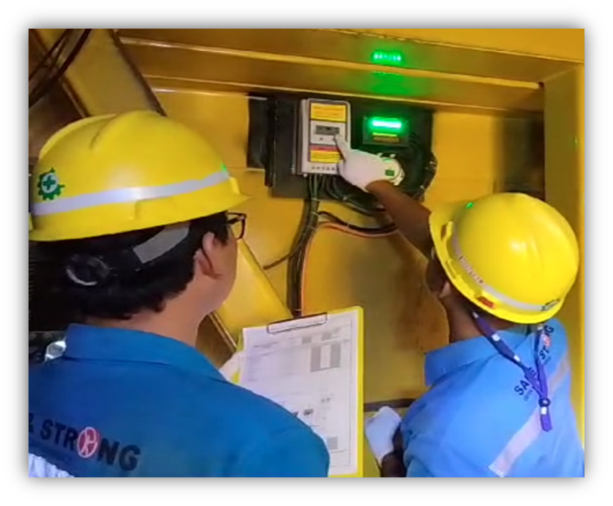Implementation of solar cell booster to prevent damage to the electrical system and overcome CA N'T-Start Problems on PC2000-8 Units at PT PPA Jobsite Borneo Indobara
DOI:
https://doi.org/10.31943/gw.v15i1.679Keywords:
Solar cell, Electrical System PC 2000-8, PT Putra Perkasa AbadiAbstract
One of the critical problems that disrupted production achievement at the Putra Perkasa Abadi (PPA) Jobsite Borneo Indobara (BIB) mine was the breakdown of the unscheduled electrical system engine can't start on the PC2000-8 unit due to low battery voltage. The problem is behind the modification or improvement in the battery charging system of the PC2000-8 unit by adding components in the form of solar cells that function as backup supplies of electrical energy or battery boosters on the main battery of the unit. In this study, there is a novelty term, namely "One Way Charge" which means that if the voltage of the unit's main battery is less than the stadium (PC2000-8 engine start voltage drop limit: 22 Volts), automatically electrical energy from the solar cell battery booster will be channeled to the unit's main battery to help meet voltage needs. The implementation shows that these improvements effectively reduce and prevent the frequency and downtime of unscheduled electrical system engine breakdowns that can't start on PC2000-8. Another benefit of this improvement is that it can eliminate potential lost costs both in terms of production and rental rates due to these problems and support the achievement of the Sustainable Development Goals (SDGs) of Clean and Affordable Energy through the use of renewable energy.
Downloads

Downloads
Published
How to Cite
Issue
Section
License
Copyright (c) 2024 Margono Margono, Suryana Suryana, Sugiyanto Sugiyanto, Arly Fiesnanda Baven Putra

This work is licensed under a Creative Commons Attribution 4.0 International License.
The use of non-commercial articles will be governed by the Creative Commons Attribution license as currently approved at http://creativecommons.org/licenses/by/4.0/. This license allows users to (1) Share (copy and redistribute the material in any medium) or format; (2) Adapt (remix, transform, and build upon the material), for any purpose, even commercially.









